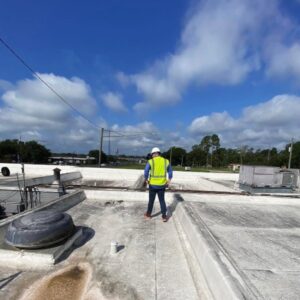
Roof inspections play a crucial role in maintaining the integrity and longevity of commercial buildings. By regularly assessing the condition of the roof, building owners can identify potential problems and take proactive measures to prevent expensive repairs and ensure the safety of their occupants. In this article, we will delve into the importance of roof inspections for commercial buildings, discuss the key benefits they offer, explore the inspection process, highlight common issues uncovered, provide tips on how to prepare for an inspection, and outline the post-inspection procedures.
Understanding the Importance of Roof Inspections
Commercial buildings are subjected to various environmental factors, including extreme weather conditions and aging. These factors can adversely affect the roof’s structural integrity and lead to leaks, material deterioration, and even collapses. To mitigate these risks, regular roof inspections are essential.
The Role of Roof Inspections in Commercial Buildings
A roof inspection involves a comprehensive examination of the roof’s condition, identifying potential problems or areas of concern. It allows building owners to stay proactive and address issues promptly before they become more severe.
Key Benefits of Regular Roof Inspections
- Prolong Roof Lifespan: By identifying and addressing issues early on, regular inspections can extend the lifespan of the roof and delay the need for expensive replacements.
- Prevent Costly Repairs: Inspections help detect minor problems, such as leaks, cracks, or loose shingles, that can be fixed easily and cost-effectively before they escalate into major repair or replacement projects.
- Promote Safety: A well-maintained roof ensures the safety of the people inside the building, protecting them from potential hazards like collapsing roofs or leaks that can lead to accidents.
- Satisfy Insurance Requirements: Insurance companies often require regular roof inspections to validate coverage and ensure the building’s safety, reducing the risk of denied claims.
Regular roof inspections not only provide the above-mentioned benefits but also offer additional advantages that are often overlooked. One such advantage is the ability to identify energy inefficiencies. During a thorough roof inspection, professionals can assess the insulation and ventilation systems, ensuring that they are functioning optimally. By addressing any issues with insulation or ventilation, building owners can improve energy efficiency, resulting in lower utility bills and a reduced carbon footprint.
Furthermore, roof inspections can also uncover potential pest infestations. Pests such as birds, rodents, or insects may find their way into commercial buildings through damaged or deteriorating roofs. By detecting these issues early on, building owners can take appropriate measures to prevent further infestation and damage to the property.
The Process of Commercial Roof Inspections
To conduct a thorough roof inspection, professionals follow a systematic process, which typically includes an initial assessment and planning, detailed inspection, and reporting.
Initial Assessment and Planning
Prior to the actual inspection, the roofing professional will assess the building’s construction plans, review maintenance records, and gather information on any previous issues. This step helps them identify the specific areas that require close attention during the inspection. Understanding the history of the roof and any past problems can provide valuable insights into potential recurring issues or areas of weakness that may need special focus.
Moreover, during the planning phase, the inspector will also take into account the weather conditions and time of day that will be most conducive to a comprehensive inspection. Factors such as sunlight, temperature, and precipitation can all impact the visibility of certain issues, so scheduling the inspection at the right time is crucial for accurate assessments.
Detailed Inspection and Reporting
During the inspection, the roofer will physically examine the roof, checking for signs of damage, leaks, material deterioration, or any other issues. They may also inspect the flashing, gutters, and other components of the roofing system. The findings of the inspection will be documented in a detailed report, which will outline the observed issues, their severity, and recommended actions. This report serves as a valuable tool for building owners and facility managers, providing them with a clear understanding of the current state of the roof and necessary steps to address any identified issues.
Common Issues Uncovered in Roof Inspections
Roof inspections often reveal various problems that require attention. Understanding these common issues can help building owners know what to expect and take necessary actions.
When conducting a thorough roof inspection, inspectors also pay close attention to the flashing around chimneys, vents, and skylights. Flashing is crucial for preventing water infiltration at these vulnerable points on the roof. Damage or deterioration of flashing can result in water leaks and compromise the roof’s ability to protect the building.
Structural Problems and Leaks
One of the primary concerns uncovered during inspections is structural problems, including sagging roofs, cracked or deteriorated support beams, or unstable roofing materials. Additionally, leaks are a common issue, which, if left unaddressed, can lead to water damage and compromise the building’s integrity.
Moreover, roof inspections often reveal issues with poor ventilation, which can contribute to moisture buildup in the attic. Excess moisture can lead to mold growth, wood rot, and decreased energy efficiency. Proper ventilation is essential for maintaining a healthy roof and prolonging its lifespan.
Material Deterioration and Damage
Over time, roofing materials can deteriorate due to exposure to sunlight, extreme weather conditions, or improper installation. Inspections often unveil issues such as cracked shingles, loose tiles, or damaged membranes, which can significantly impact the roof’s functionality.
Furthermore, inadequate maintenance and neglect of gutter systems can also be highlighted during roof inspections. Clogged gutters can cause water to overflow, leading to water pooling on the roof and potential water damage. Ensuring gutters are clear of debris is essential for proper water drainage and preventing issues that can affect the roof’s structure.
How to Prepare for a Commercial Roof Inspection
Preparing for a commercial roof inspection can help streamline the process and ensure that it is conducted efficiently. Here are some key considerations:
Scheduling and Timing Considerations
Coordinate with the roofing professional to determine the best time for the inspection, considering factors such as weather conditions, building occupancy, and any ongoing construction activities. Ensure that the necessary access to the roof is provided and any potential hazards are addressed.
What to Expect During the Inspection
During the inspection, the roofer may need to access interior spaces to assess the roofing system’s condition fully. Therefore, ensure that any relevant areas are accessible and remove any obstacles that may hinder the inspection process.
Post-Inspection Procedures
Following a roof inspection, it is crucial to carefully review the inspection report to understand the issues identified and the recommended actions.
Understanding Your Inspection Report
The inspection report serves as a guide for addressing the identified issues. In the report, the roofer will provide a detailed description of the problems, their severity level, and the recommended solutions. Take the time to understand the report fully and seek clarification if needed.
Planning for Repairs and Maintenance
Based on the inspection report, develop a plan to address the identified issues promptly. Prioritize repairs and maintenance tasks according to their severity and allocate the necessary resources to ensure the roof’s integrity and longevity.
In conclusion, commercial roof inspections are an essential aspect of maintaining the safety, functionality, and longevity of commercial buildings. Regular inspections help identify and address issues before they become more severe and costly. By understanding the importance of roof inspections, preparing for the process, and carefully reviewing the inspection reports, building owners can effectively manage their roofs and ensure the long-term protection of their investment.
Don’t let potential roof issues compromise the safety and integrity of your commercial property. Trust Commercial Roofing Rana, the experts in providing top-tier roofing services to businesses across the Mid-South. With our Duro-Last roofing systems and a team of licensed professionals, we’re committed to delivering exceptional quality and protection for industrial buildings, healthcare centers, churches, government buildings, and more. Since 1983, we’ve been the go-to choice for commercial roofing in Tennessee, Kentucky, Mississippi, and Arkansas. Ensure your building is ready to withstand the elements and Schedule Now! for a thorough roof inspection and the best defense against water damage.
